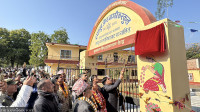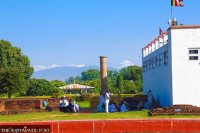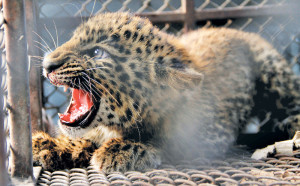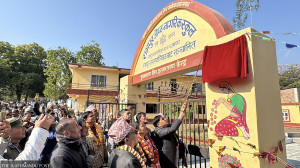Lumbini Province
Child marriage, teenage pregnancy persist in Dang
Despite laws and awareness campaigns, deep-rooted traditions and lack of education are perpetuating the practice.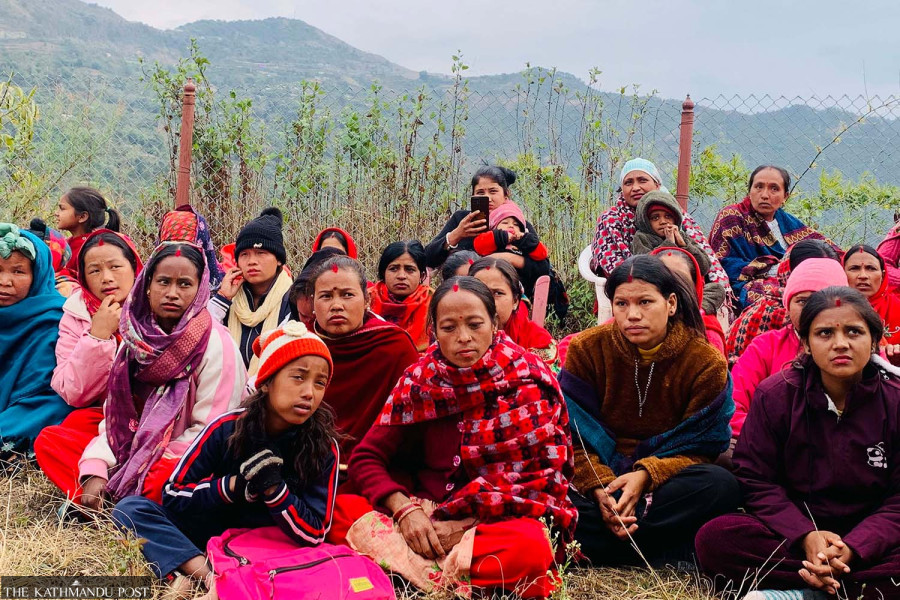
Durgalal KC
Mina Bishwakarma, a resident of Harnok in ward 1 of Ghorahi Sub-metropolitan City, is a 17-year-old mother of a one-year-old son. She, however, is yet to reach legal marriageable age. The Civil Code 2017 states that the minimum age for marriage—for both women and men—in Nepal is 20.
But Mina is unaware of this legal provision. She was amazed upon hearing that marrying before 20 is legally punishable in the country. “I didn't know that there would be legal action for getting married at an early age,” she said. “One can get married if he/she is ready for it. How is it punishable?”
According to Mina, it is quite normal for girls in rural areas to get married after turning 15. “In our village, it is customary for girls to marry young,” she said. “Girls are encouraged to focus on household chores and farming instead of studies. People in the rural areas believe that since girls have to move to someone’s else’s house eventually, it is better for them to marry early.”
Mina added that daughters, especially from impoverished communities, cannot read and write though they aspire for education.
Sita Nepali of ward 19 of Tulsipur Sub-metropolis in Dang got married at the age of 16. She is now 20 and a mother of two children. “It doesn't really matter at what age we should get married,” Sita said. “Parents marry off their daughters when they think they can handle household chores.” Sita admitted that one should endure hardships for getting married at a young age.
Although Nepal abolished child marriage in 1963, the practice is still rampant in rural areas despite various attempts of the government authorities and social organisations to eradicate it. As per Article 173 of the Criminal Code 2017, a person found guilty of either committing or arranging a child marriage is subject to a jail term of up to three years and a fine of Rs30,000. However, in many cases, these legal provisions, aimed at protecting children from child marriage, have ended up being used to penalise them instead.
According to the national census held in 2021, 33.7 percent girls between the age of 15 to 17 got married in Dang, a Tarai district of Lumbini Province. Similarly, 36.9 percent of girls got married between 18 and 20 years of age.
Ghorahi Sub-metropolitan City was declared a child-friendly local unit two years ago. According to the national strategy of child-friendly local governance, a local unit is declared child-friendly after fulfilling 51 indicators including control of child marriage. However, child marriages are still unchecked in Ghorahi.
Gender discrimination, lack of opportunity for education and job, dowry system, lack of awareness among the guardians, lack of effective implementation of laws and ineffective monitoring by the concerned authorities, among others, are the main reasons behind the high number of child marriage cases in the district, officials say.
“Child marriage cannot be controlled in the rural area due to lack of awareness and education,” said Huma Kumari DC, deputy mayor of Ghorahi Sub-Metropolitan City. “Our local unit has been launching awareness programmes to control child marriage.”
The adolescent girls and women who got married and conceived at an early age are unaware about the possible health risks, DC said. They do not know about the harms of pregnancy at an early age. “Health of many adolescent girls who got married at an early age is at risk,” DC added. “They have to endure further troubles due to lack of proper education and income-generating activities.”
The Nepal Demographic and Health Survey-22, conducted by the Ministry of Health and Population, shows that overall, 14 percent of women aged 15–19 have been pregnant, including 10 percent who have had a live birth, while two percent experienced a pregnancy loss. Teenage pregnancy is highest in Karnali Province, at 21 percent, followed by Madhesh Province, at 20 percent, Koshi and Gandaki Province, at 13 percent, and Lumbini Province, at 10 percent, according to the 2022 survey.




 8.12°C Kathmandu
8.12°C Kathmandu
